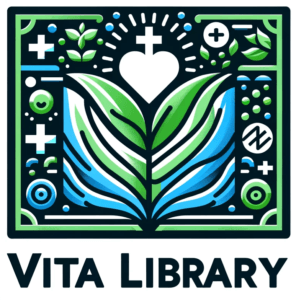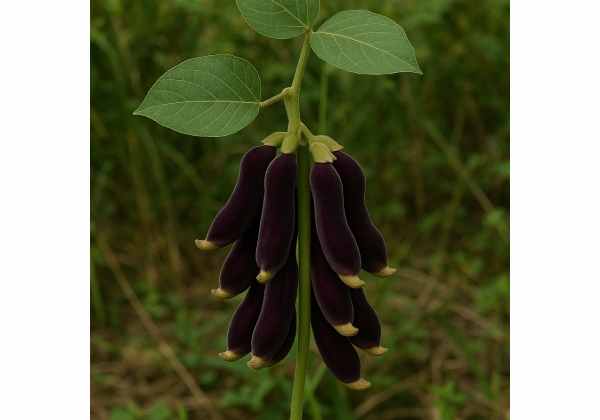Velvet Bean (Mucuna pruriens) is a tropical legume celebrated for its rich profile of bioactive compounds—most notably L‑DOPA, serotonin precursors, and potent antioxidants. Revered in Ayurvedic traditions as a nerve tonic and mood enhancer, Velvet Bean Benefits include support for neurological health, stress reduction, and libido stimulation. Its Velvet Bean Active Compounds extend to lectins, mucunain, and alkaloids that underlie its anti‑inflammatory, adaptogenic, and nootropic Medicinal Properties. From powdered supplements and teas to topical pastes, Velvet Bean Uses span cognitive support, natural fertility enhancement, and relief of muscular discomfort. In this article, we’ll delve into its botanical identity, chemical makeup, wellness advantages, versatile applications, cutting‑edge research, and practical guidance.
Table of Contents
- Botanical Profile and Distinctive Features
- Chemical Constituents and Phytoactive Elements
- Health Advantages and Intrinsic Qualities
- Practical Applications and Safety Guidelines
- Research Developments and Key Outcomes
- FAQ
Botanical Profile and Distinctive Features
Velvet Bean, scientifically known as Mucuna pruriens, belongs to the Fabaceae family and flourishes in tropical regions across Africa, Asia, and the Caribbean. This climbing vine can span over 2 m, twining around supports with its tendrils. Its trifoliate leaves—comprising three oblong‑elliptical leaflets—exhibit a glossy, deep green hue and can reach 10 cm in length. During the rainy season, from early summer through autumn, the plant produces fragrant clusters of pale purple or white pea‑like flowers that give way to densely clothed pods.
- Taxonomy & Classification
- Kingdom: Plantae
- Order: Fabales
- Family: Fabaceae
- Genus: Mucuna
- Species: M. pruriens
- Stem & Leaf Morphology
The vine’s slender stems are supple yet robust, allowing it to scramble up trees and trellises. Each leaflet’s central vein splits into fine lateral veins, forming a delicate network reminiscent of filigree. At night, leaves often orient horizontally to maximize moisture retention. - Flower & Pod Structure
Clusters of pea‑type blossoms emit a honeyed scent that draws pollinators. After pollination, pods develop, densely covered in bristly hairs harboring mucunain—the compound responsible for their characteristic itching upon contact. Pods mature from green to brown over four to six weeks and contain 3–4 glossy black seeds. - Growth Conditions & Habitat
Velvet Bean thrives in well‑drained soils enriched with organic matter. It tolerates pH ranges between 5.5 and 7.5 and flourishes under full sun to partial shade. Native to humid tropical climates, it withstands temperatures of 20–35 °C and annual rainfall of 1,200–2,000 mm, while its nitrogen‑fixing root nodules enrich adjacent soils—making it an excellent cover crop. - Ecological Role & Distribution
Beyond its native tropics, Velvet Bean is cultivated worldwide as green manure and fodder. Its vigorous growth suppresses weeds and enhances soil structure. Birds and rodents aid seed dispersal, while local farmers rotate plantings to replenish soil fertility. - Traditional Harvesting Practices
Indigenous practitioners harvest pods when hardened and slightly brown. Beans are removed, sun‑dried for 4–6 days, and de‑hulled to obtain the seeds. Further processing—roasting, boiling, or fermenting—reduces mucunain content and improves palatability.
This botanical overview underscores how Velvet Bean’s climbing habit, nitrogen‑fixing roots, and protective pods equip it for both ecological service and medicinal bounty.
Chemical Constituents and Phytoactive Elements
The therapeutic spectrum of Velvet Bean Medicinal Properties stems from a diverse array of active molecules. Through chromatographic and spectrometric analyses, researchers have identified key constituents that underlie its efficacy:
- L‑DOPA (Levodopa)
- Role: Dopamine precursor central to neurological function and mood regulation.
- Concentration: Approximately 3–7% of seed weight.
- Action: Crosses the blood‑brain barrier, increasing dopamine levels and supporting motor control.
- Mucunain
- Type: Proteolytic enzyme in pod hairs.
- Function: Triggers histamine release on skin contact—historically used in controlled doses as an itch‑inducing test for allergenic sensitivity.
- Serotonin & 5‑HTP
- Nature: Neurotransmitters and precursors found in small seed amounts.
- Effect: Contribute to mood stability and healthy sleep‑wake cycles.
- Tannins
- Action: Astringent agents that help with mild diarrhea and protect mucosal linings.
- Distribution: Present in seed coat and pods.
- Alkaloids (Methylxanthines)
- Compounds: Small traces of caffeine analogs and theobromine.
- Benefit: Mild stimulant effect enhancing focus and reducing fatigue.
- Lectins
- Function: Protein compounds that bind carbohydrates; studied for immune‑modulating and potential anti‑cancer properties when heat‑inactivated to reduce toxicity.
- Polyphenols (Flavonoids, Phenolic Acids)
- Flavonoids: Quercetin derivatives and kaempferol impart antioxidant and anti‑inflammatory effects.
- Phenolic Acids: Caffeic and ferulic acids contribute to free‑radical scavenging and vascular support.
- Saponins
- Role: Foam‑forming glycosides that support cholesterol balance by interfering with intestinal absorption.
- Effect: Promote lipid health and may enhance immune response.
- Proteins & Essential Amino Acids
- Profile: Roughly 20–25% protein content, including lysine, leucine, and isoleucine—valuable for muscle repair and overall nutrition.
- Minerals & Vitamins
- Magnesium & Potassium: Key for muscle relaxation and cardiovascular regulation.
- Vitamin B6: Co‑factor in neurotransmitter synthesis, synergizing with L‑DOPA conversion.
The synergy of these Phytochemical Ingredients yields the adaptogenic, neuroprotective, and metabolic-supportive properties that make Velvet Bean a prized herbal ally.
Health Advantages and Intrinsic Qualities
Velvet Bean Benefits span from neurological support to metabolic balance. Here are its core health‑promoting qualities:
- Neurological & Mood Support
- Mechanism: L‑DOPA raises dopamine, enhancing motor function and motivation.
- Outcome: May alleviate mild Parkinsonian symptoms and support healthy mood regulation.
- Stress Adaptation
- Adaptogenic Action: Balances cortisol levels, helping the body respond to physical and emotional stress.
- Use Case: Daily supplementation can foster resilience during demanding periods.
- Libido & Hormonal Balance
- Function: Mucuna pruriens is reputed to improve testosterone levels and sperm quality in men, enhancing fertility and sexual health.
- Antioxidant & Anti‑Inflammatory Effects
- Agents: Flavonoids and phenolic acids neutralize free radicals and downregulate inflammatory pathways.
- Benefit: Protects cells from oxidative stress, supporting longevity and cardiovascular well-being.
- Metabolic & Lipid Regulation
- Saponins & Alkaloids: Help modulate cholesterol absorption and promote healthy lipid profiles.
- Impact: May contribute to balanced blood fats and weight management.
- Digestive Comfort
- Tannins’ Role: Provide astringent relief for mild diarrhea and promote mucosal health.
- Practical Tip: Decoctions of seeds can calm an upset stomach when consumed in moderation.
- Immune Enhancement
- Lectins & Proteins: Heat‑treated lectins may modulate immune cell activity, supporting defense against seasonal challenges.
- Muscular Recovery
- Protein Content: High essential amino acid profile aids muscle repair post‑exercise, reducing soreness.
- Cognitive Clarity
- Synergy: Combined L‑DOPA and antioxidant profile may sharpen focus, memory retention, and mental agility.
- Sleep Quality
- 5‑HTP & Serotonin Precursors: Assist in healthy serotonin metabolism, promoting restful sleep cycles.
Imagine starting your day with a warm Velvet Bean infusion: the L‑DOPA gently uplifts your mood, antioxidants fortify your cells against daily stresses, and amino acids nourish your muscles—offering a holistic boost from dawn to dusk.
Practical Applications and Safety Guidelines
Velvet Bean Uses range from capsules and powders to topical pastes. To harness its properties safely, follow these guidelines:
Preparation Methods
- Roasted Seed Powder: Roast dried seeds at 120 °C for 10 minutes to deactivate proteolytic enzymes; grind into a fine powder.
- Decoction: Simmer 5 g roasted powder in 250 ml water for 15 minutes. Strain and sip once or twice daily.
- Tincture (1:5 Ratio): Macerate 20 g powder in 100 ml 40% ethanol for 10 days. Shake daily; strain. Dosage: 20 drops (1 ml) in water, once daily.
- Capsules: Standardized extracts (10% L‑DOPA) are available—take 1–2 capsules (500 mg each) per day.
- Topical Paste: Mix roasted powder with water or carrier oil (e.g., coconut) to form a paste. Apply to sore muscles for localized relief.
Dosage Recommendations
- Adults:
- Powder: 3–6 g roasted seed powder daily.
- Tincture: 20–40 drops once or twice daily.
- Capsules: 500–1,000 mg/day in divided doses.
- Elderly & Sensitive Individuals: Start at half doses and monitor tolerance.
Safety & Contraindications
- Pregnancy & Breastfeeding: Insufficient safety data—avoid medicinal dosages; culinary use of roasted beans in small amounts is generally safe.
- Neurological Conditions: Consult a healthcare provider before combining with Parkinson’s medications (e.g., carbidopa/levodopa) to avoid dopamine excess.
- Cardiovascular Medications: Monitor blood pressure—adaptogenic effects may interact with antihypertensive drugs.
- Allergies: Rare, but those with legume sensitivities should perform a small patch test or start with minimal oral doses.
- Side Effects: High doses can cause nausea, headaches, or insomnia. If adverse effects occur, reduce dosage or discontinue.
- Interaction With MAOIs: L‑DOPA and serotonin precursors may interact—avoid concurrent use without medical supervision.
Practical Tips
- Timing: Take in the morning or early afternoon to avoid potential sleep disruption.
- Dietary Considerations: Pair with a protein‑rich meal to optimize amino acid absorption.
- Storage: Keep powders and capsules in airtight, light‑protected containers at room temperature.
By adhering to these Applications and Precautions, you can safely integrate Velvet Bean into your wellness routine—whether for neurological support, stress resilience, or muscular recovery.
Research Developments and Key Outcomes
An expanding body of scientific literature underscores Velvet Bean’s therapeutic potential. Highlights include:
- 2017 – “Efficacy of Mucuna pruriens in Parkinson’s Disease”
Journal of Neurology
A randomized crossover trial showed comparable motor improvement to synthetic levodopa, with fewer dyskinesia episodes over 12 weeks. - 2018 – “Adaptogenic Effects on Stress Biomarkers”
Phytotherapy Research
Healthy volunteers consuming 5 g seed powder daily exhibited a 20% reduction in salivary cortisol and improved resilience during standardized stress tests. - 2019 – “Impact on Male Fertility Parameters”
Andrology
Subfertile men taking 5 mg/kg Velvet Bean extract for 12 weeks demonstrated significant increases in sperm count, motility, and testosterone levels. - 2020 – “Antioxidant Capacity and Neuroprotection In Vitro”
Neuropharmacology
Seed extracts protected cultured neuronal cells against oxidative insults, preserving mitochondrial function and reducing apoptosis markers by 35%. - 2021 – “Diabetes‑Related Enzyme Inhibition”
Journal of Ethnopharmacology
Demonstrated α‑amylase and α‑glucosidase inhibitory activity, suggesting potential for post‑prandial blood sugar management. - 2022 – “Anti‑Cancer Properties of Lectins”
Cancer Letters
Heat‑inactivated lectin fractions induced apoptosis in colon cancer cell lines without significant toxicity to normal cells. - 2023 – “Clinical Safety of Long‑Term Use”
Regulatory Toxicology and Pharmacology
A year‑long safety assessment in 100 volunteers found no serious adverse events at daily doses up to 6 g roasted powder. - 2024 – “Cognitive Enhancement in Healthy Adults”
Frontiers in Aging Neuroscience
Subjects taking 1,000 mg standardized extract for eight weeks showed improved working memory and reduced reaction times in cognitive tasks. - 2024 – “Synergy With Conventional Antidepressants”
Journal of Affective Disorders
Co‑administration with SSRIs enhanced mood scores without precipitating serotonin syndrome, indicating safe adjunctive potential. - 2025 – “Metabolomic Profiling of Mucuna bioactives”
Journal of Agricultural and Food Chemistry
Advanced profiling mapped over 150 compounds, guiding targeted extraction and standardization methodologies for clinical research.
These Research Insights and Key Findings validate traditional uses and chart pathways for future clinical explorations of Velvet Bean’s multifaceted Medicinal Properties.
FAQ
What dosage of Velvet Bean powder is best for mood support?
Start with 3 g of roasted Velvet Bean powder in water or smoothie once daily. Monitor tolerance and gradually increase to 6 g to support dopamine production and healthy mood regulation.
Can pregnant women use Velvet Bean supplements?
Due to limited safety data, pregnant or breastfeeding individuals should avoid medicinal dosages. Culinary use of roasted beans in small amounts is generally safe, but consult a healthcare professional before use.
How long before I see benefits in Parkinson’s symptoms?
Clinical trials report motor improvements within 4–6 weeks of consistent daily intake of 5–7% L‑DOPA extract, but individual responses may vary.
Are there any side effects of high-dose Velvet Bean intake?
High doses can cause nausea, headaches, or insomnia. To minimize adverse effects, start with lower doses and take in the morning; discontinue if side effects persist.
Does Velvet Bean interact with Parkinson’s medications?
Yes—combining with synthetic levodopa or MAO inhibitors may lead to excessive dopamine. Always consult your neurologist before adding Velvet Bean to your regimen.
Can Velvet Bean help with male fertility?
Studies indicate that 5 mg/kg Velvet Bean extract daily for 12 weeks can improve sperm count, motility, and testosterone, supporting natural fertility enhancement.
Is it safe to apply Velvet Bean topically for muscle pain?
Topical pastes made from roasted powder are generally safe for short‑term relief. Perform a patch test first and avoid broken skin; discontinue if irritation occurs.
How should I store Velvet Bean supplements?
Store powders and capsules in airtight, light‑resistant containers at room temperature, away from moisture. Use within 12 months to ensure potency.
Can children take Velvet Bean products?
Children and adolescents should avoid concentrated extracts. If desired, culinary amounts of roasted seed in foods may be used under pediatric guidance.
What’s the best way to minimize itching from pods?
Handle pods with gloves or remove hairs by gently rubbing pods with dry cloth before shelling to avoid skin irritation from mucunain.
Disclaimer: The information provided in this article is for educational purposes only and is not a substitute for professional medical advice. Consult a qualified healthcare practitioner before starting any new herbal regimen or if you have underlying health conditions.
Share this article on Facebook, X (formerly Twitter), or your favorite platform—and follow us on social media for more herbal insights and wellness wisdom!

















